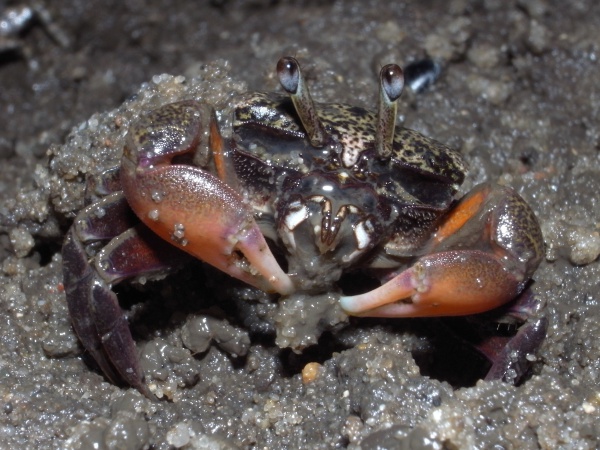Facts About Heloecius
Meet the Semaphore Crab: Heloecius cordiformis
Heloecius cordiformis, commonly known as the semaphore crab, is a captivating semi-terrestrial species inhabiting the mangrove swamps and mudflats along Australia's eastern coastline. Their range extends from Brisbane, Queensland, to Port Phillip Bay in Victoria, and even to the eastern regions of Tasmania.
Size and Appearance:
Adult semaphore crabs measure approximately 25 mm in width. Males are generally larger and possess more strikingly colored claws compared to females. These vivid claws are not merely decorative; they play a vital role in communication.
Unique Communication:
Male semaphore crabs are renowned for their distinctive method of "talking" to one another. They wave their claws in a semaphore-like manner to convey signals to other crabs, whether to warn of danger or attract a mate.
Breathing and Feeding:
These crabs are adept survivalists, capable of breathing both air and underwater. At low tide, they are often seen feeding on detritus within the sediment. As deposit feeders, they sift through the sediment to find organic matter. Their mandibles also enable them to consume larger pieces of plants and animals.
Habitat:
Heloecius cordiformis thrives in intertidal mangroves and estuaries, typically residing among the tangled roots of mangrove trees. This environment offers ample food supply and protection from predators such as birds and fish.
Systematics and Classification:
Initially, Heloecius cordiformis was classified under a different genus and family. However, it now occupies its own genus and family, Heloeciidae. Intriguingly, research suggests that Heloecius may be the most primitive member of the family Ocypodidae.
